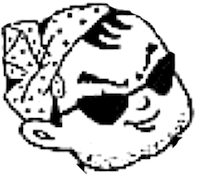人間外存在
Non-Human Being

人間外存在
Non-Human Being

人間外存在(ノン・ヒューマン)すなわち非人間(ひにんげん、non-human)とは、人 間とみなされるには十分ではないが、何らかの人間らしい特徴を示す存在のことだ。この用語は様々な文脈で使用されており、ロボットや自動車な ど、人間の知性によって開発された物体を指すこともある。
| Non-human (also
spelled nonhuman) is any entity displaying some,[1] but not enough,
human characteristics to be considered a human. The term has been used
in a variety of contexts and may refer to objects that have been
developed with human intelligence, such as robots or vehicles. |
人間外存在(ノン・ヒューマン)すなわち非人間(ひにんげん、non-human)とは、人
間とみなされるには十分ではないが、何らかの人間らしい特徴を示す存在[1]のことである。この用語は様々な文脈で使用されており、ロボットや自動車な
ど、人間の知性によって開発された物体を指すこともある。 |
| In
the animal rights movement, it is common to distinguish between "human
animals" and "non-human animals". Participants in the animal rights
movement generally recognize that non-human animals have some similar
characteristics to those of human persons. For example, various
non-human animals have been shown to register pain, compassion, memory,
and some cognitive function. Some animal rights activists argue that
the similarities between human and non-human animals justify giving
non-human animals rights that human society has afforded to humans,
such as the right to self-preservation, and some even wish for all
non-human animals or at least those that bear a fully thinking and
conscious mind, such as vertebrates and some invertebrates such as
cephalopods, to be given a full right of personhood. |
動
物愛護運動では、「人間の動物」と「人間以外の動物」を区別して考えるのが一般的である。動物愛護運動の参加者は、一般に、人間以外の動物が人間のそれと
類似したいくつかの特性を持っていることを認識している。例えば、様々な非ヒト動物が痛覚、同情心、記憶、認知機能を持つことが確認されている。動物愛護
主義者の中には、人間と人間以外の動物の類似性から、人間社会が人間に与えてきた権利(自衛権など)を人間以外の動物に与えることを正当化し、すべての人
間以外の動物、少なくとも脊椎動物や頭足類などの一部の無脊椎動物など、完全に考え、意識を持つ動物に人としての権利を与えることを望む人さえもいる。 |
| Sandra the Orangutan Sandra (born February 14, 1986, in Rostock Zoo in East Germany) is an orangutan, currently living in the Center for Great Apes in Florida after being moved from the Buenos Aires Zoo in 2019. Sandra is a zoo-born, hybrid orangutan of the two separate species of Borneo and Sumatra orangutans. In Germany, Sandra, then called Marisa, was transferred to a second zoo in Germany, then transferred to Argentina on September 17, 1994. In the Buenos Aires Zoo the name of the orangutan was changed to Sandra. Sandra had a baby girl called Shembira or Gembira, who was born on March 2, 1999, and was transferred to Xixiakou Wild Animal Park, Rongcheng, Sandong, China in 2008. During the amparo court case in Buenos Aires in 2015, it was revealed that an attempt by the Buenos Aires zoo to mate Sandra with an orangutan named Max failed because Sandra preferred instead to sit outside in the rain and snow. On December 18, 2014, Sandra was termed by the court in Argentina as a "subject of rights" in an unsuccessful habeas corpus case regarding the release of the orangutan from captivity at the Buenos Aires zoo. The decision turning down the habeas corpus application also led to the court's direction to prosecute alleged cruelty by the zoo through the prosecutor's office in Buenos Aires in 2015. The brief "subject of rights" statement left the status of the orangutan Sandra as a "non-human being" uncertain legally, until on October 21, 2015, Justice Elena Amanda Liberatori ruled in an amparo case with Sandra that the orangutan is "una persona no humana" or "a non-human person" and ordered the city of Buenos Aires to provide what is "necessary to preserve her cognitive abilities". A few days after the decision, both sides said they would appeal. |
オランウータンのサンドラ サンドラ(1986年2月14日生まれ、東ドイツのロストック動物園)は、2019年にブエノスアイレス動物園から移動し、現在はフロリダ州の大型類人猿 センターで暮らしているオランウータンである。サンドラは、ボルネオオランウータンとスマトラオランウータンという2つの別種のオランウータンの動物園生 まれのハイブリッドオランウータンである。ドイツでは、当時マリサと呼ばれていたサンドラは、ドイツの第二動物園に移され、その後1994年9月17日に アルゼンチンへ移送されました。ブエノスアイレス動物園では、オランウータンの名前がサンドラに変更された。 サンドラは1999年3月2日にシェンビラまたはゲンビラという女の子を出産し、2008年に中国山東省栄城市の西湘野生動物公園に移送された。2015 年にブエノスアイレスで行われたアンパロ裁判の際、ブエノスアイレス動物園がサンドラとマックスというオランウータンを交配させようとしたところ、サンド ラが代わりに雨や雪の中で外に座っているのを好んだため失敗したと明らかにされた。 2014年12月18日、ブエノスアイレス動物園の飼育下からのオランウータンの解放に関する人身保護訴訟で、サンドラはアルゼンチンの裁判所から「権利 の主体」と称され、不成立となりました。人身保護申請を断った判決は、2015年にブエノスアイレスの検察庁を通じて動物園による残虐行為の疑いで起訴す る方向にもっていったのです。権利の主体」という簡潔な声明は、オランウータンのサンドラが「人間ではない存在」であることを法的に不確かなままにし、 2015年10月21日にエレナ・アマンダ・リベラトーリ判事がサンドラとのアンパロ裁判で、オランウータンは「una persona no humana」つまり「人間ではない人間」であるとし、「彼女の認知能力を保つために必要」なものを提供するようブエノスアイレス市に対して命じたので あった。判決から数日後、双方は控訴するとした。 |
| Contemporary
philosophers have drawn on the work of Henri Bergson, Gilles Deleuze,
Félix Guattari, and Claude Lévi-Strauss (among others) to suggest that
the non-human poses epistemological and ontological problems for
humanist and post-humanist ethics,[2] and have linked the study of
non-humans to materialist and ethological approaches to the study of
society and culture.[3] |
現
代の哲学者たちは、アンリ・ベルクソン、ジル・ドゥルーズ、フェリックス・ガタリ、クロード・レヴィ=ストロースなどの仕事を引き合いに出して、人間以外
の存在がヒューマニストやポストヒューマニストの倫理学に認識論や存在論の問題を提起していることを示唆し[2]、人間以外の人間の研究を社会と文化の研
究に対する唯物論や倫理学のアプローチに結びつけている[3]。 |
| The
term non-human has been used to describe computer programs and
robot-like devices that display some human-like characteristics. In
both science fiction and in the real world, computer programs and
robots have been built to perform tasks that require human-computer
interactions in a manner that suggests sentience and compassion. There
is increasing interest in the use of robots in nursing homes and to
provide elder care.[4] Computer programs have been used for years in
schools to provide one-on-one education with children. The Tamagotchi
toy required children to provide care, attention, and nourishment to
keep it "alive". |
非
人間的という言葉は、人間のような特徴を示すコンピュータープログラムやロボットのような装置を表すのに使われてきた。サイエンスフィクションでも現実世
界でも、コンピュータプログラムやロボットは、感覚や思いやりを示唆するような方法で、人間とコンピュータの相互作用を必要とするタスクを実行するように
作られてきた。老人ホームでのロボットの使用や高齢者介護への関心が高まっている[4]。コンピュータプログラムは、長年、学校で子供たちと1対1の教育
を行うために使用されてきた。おもちゃの「たまごっち」は、「生きている」状態を維持するために、子どもたちが世話や注意、栄養を与える必要があった。 |
| https://en.wikipedia.org/wiki/Non-human |
+++
Links
リンク
文献
その他の情報


